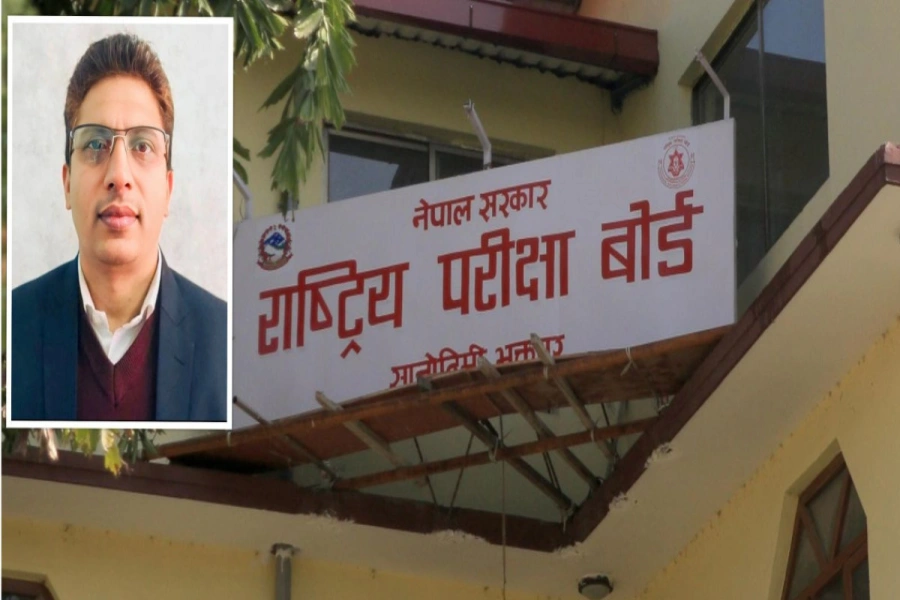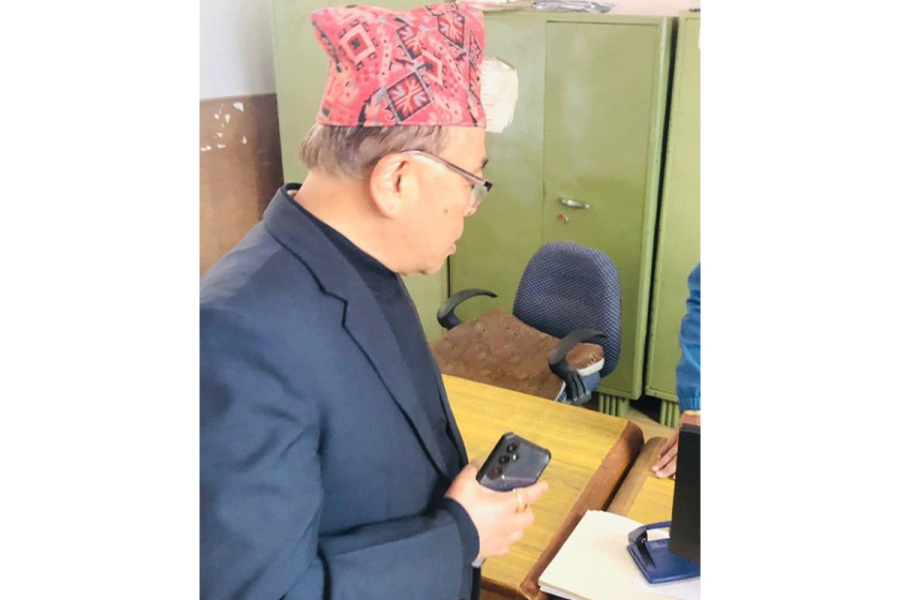Challenge is to deliver ‘bikas’ at the doorsteps of extremely poor communities like Chepangs and help transform their lives by involving them at every level.
Nearly five years ago, when philanthropist Bishnu Gautam reached Kanda in Chitwan district after walking uphill for more than six hours, he could not believe there were such disadvantaged settlements in Nepal even after six decades of planned development. The village is mainly inhabited by Chepangs—one of the poorest communities in the country. They are at the bottom rung when measured in terms of food security, life expectancy and access to health services or education, among others.
Gautam saw a young girl looking for ‘bhyakur’ (a kind of wild fruit) as a replacement of food. He later came to know that she had delivered a child just two weeks back at her home since the nearest health post was five hours away.
Chepangs have been living in abject poverty for the past several decades. Though the country has moved from monarchy to a Republican system and passed through a decade-long armed struggle, there have been no visible changes in their lifestyles. They live in thatched huts and grow food like maize and millet that can barely support them for few months. For the rest of the year, either they will have to migrate or forage in the forest.
Period plans
Though Nepal embarked on the journey of periodic planning since 1956, it was only in the sixth plan (1981-85) that reducing poverty was stated as one of the development objectives. Till 1990, nearly 40 percent of the people lived below the so-called poverty line (that is USD 77 per capita, per annum). According to the World Bank, Nepal managed to halve the percentage of people living on less than $1.25 a day in only seven years, from 53 percent in 2003-04 to 25 percent in 2010-11. It is believed to have gone further down despite the devastating earthquakes that hit the country two years ago.
Remittance—the money sent home by millions of Nepalis working abroad—has been credited for the fast decline of poverty in the country. In the year 2000, the contribution of remittance to the country’s Gross Domestic Product (GDP) stood at two percent, which has gone up to around 30 percent last year.
Poverty: A Multidimensional Problem, Nepalese Context

“ Given the phenomenal rise in remittances, they are likely the primary engine behind the improvements in living standards witnessed in Nepal, both directly (households receiving remittances) and indirectly (increased labour income of those that remained). Despite the successful and rapid reduction in poverty, there is an urgent need to change Nepal’s development model,” said a recent study published by the Washington DC-based Bank.
What such a model would be remains a matter of debate, though. While proponents of the free market economy call for less role for the state and increasing role for the private sector, others argue that the state should have a predominant role in economic development as well as in delivering social equity and justice. Whatever the model, raising human development would be their common objective.
Regional divides
According to the Nepal Human Development Report (HDR) 2014, Nepal’s trends in human development over the past decade show overall improvement accompanied by considerable, often entrenched regional and social inequalities. Regions already behind in human development remain that way, although inequalities among regions have begun narrowing, the report said.
And, it has got repercussions on reducing poverty in the country. Human Poverty Index (HPI) is one of the tools to measure poverty among households. According to the UN, the HPI value for Nepal in 2011 was estimated at 31.12 The HPI measures average deprivation in three basic dimensions of human development—a long and healthy life, knowledge and a decent standard of living.
For many Nepalis, it still remains a distant dream.
Back in Kanda, Bishnu Gautam interacted with the members of the Chepang community and asked what their most pressing needs were. Though they needed khana, nana and chhana (ie food, clothes and shelter), they said that they wanted educational opportunities for their children. The Balram-Kumar hostel he constructed in memory of his two late sons now houses more than 160 children mostly from the Chepang, Tamang and Gurung communities.
The Laxmi Pratisthan has already constructed 63 houses for the local people by mobilising resources mainly from the Non-Resident Nepali community. The Pratisthan first brought trainers from Lamjung district and trained local youths in carpentry and masonry. The local youths then utilised those skills in building houses for their own community.
The Prastisthan is also providing training to local women and distributing seeds and beehives to the local people. It also provides them training on raising goats and growing foods. And, within the last couple of years, visible transformation can be seen among the entire community. So, what are the lessons learnt? According to Gautam, the main lesson is that lives of marginalised communities like Chepangs can be transformed through dedication, mobilising resources and targeted support. “Of course, we should shun from imposing our own ideology and help them to use their own capabilities,” he added.
The capability of the people to take opportunities for their survival or the economic and social improvements is usually described as ‘agency.’ In his book Changing Livelihoods: Essays on Nepal’s Development since 1990, Jagannath Adhikari argues that policies are needed to strengthen the agency of the people and to facilitate the work or the activities they have undertaken as individuals and groups.
“This might include helping women who are trying to migrate for labour jobs, facilitate the co-operative movement organised by small farmers in the marketing of vegetables and milk production, (or) help squatters in their organisational efforts to improve public safety and basic utilities like water supply and sanitation, among others,” he writes.
For over 60,000 Chepang population scattered in Chitwan and neighboring districts, periodic plans have brought little cheers. The ‘Praja Bikas Karyakram’ introduced during the Panchayat era targeted at their upliftment but failed to bring about any visible changes in their living standards. Even programs launched after the restoration of democracy in 1990 couldn’t reach the area which were several hours trek away from the nearest road.
Local level elections—that took place after nearly 20 years—have installed local leadership in most of the country that knows the problems being faced by local communities and are best placed to address them. Now, the challenge is to deliver ‘bikas’ at the doorsteps of extremely poor communities like Chepangs and help transform their lives by involving them at every level.
Lessons learnt by Bishnu Gautam in Kanda could be handy for policy makers as well as local leaders.
The author is a BBC journalist based in London. Views expressed are his own
Twitter: @bhagirathyogi







































